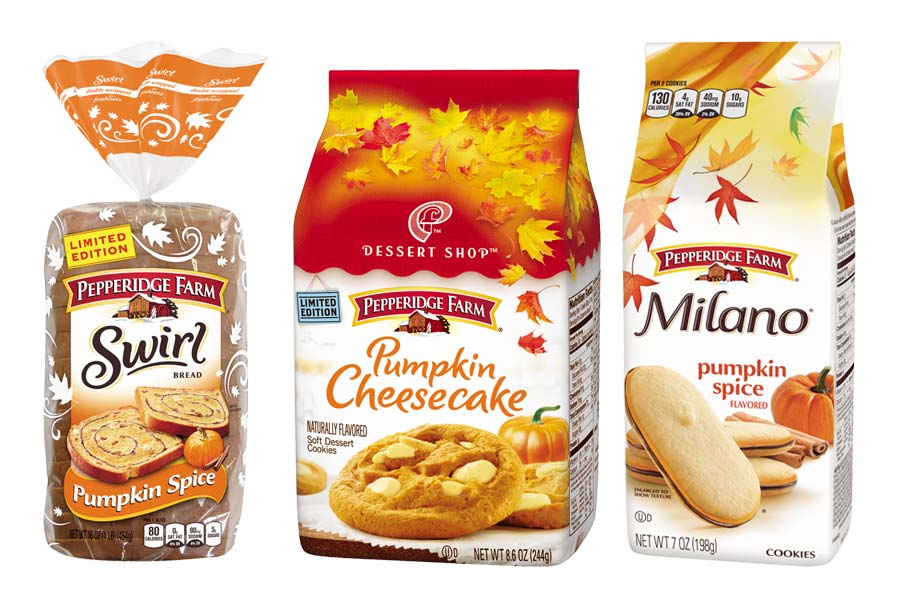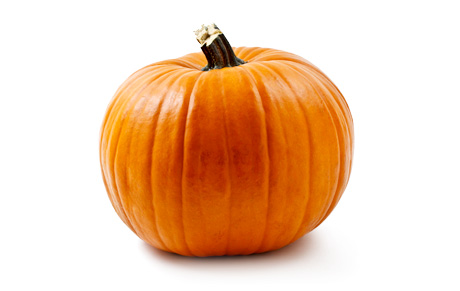
“Pumpkin Spice Lattes are back!”
“Try our new pumpkin muffins!”
These are some examples of seasonal offerings that businesses bring back year after year for the fall season. Every fall businesses take advantage of the change in season to offer a variety of seasonal pumpkin products. From pumpkin bagels to pumpkin coffee to pumpkin cookies, there isn’t a kind of food you can’t get pumpkin flavored. Take a look at these different Pepperidge Farm pumpkin products!
Dunkin Donuts and Starbucks are probably the most well known for their pumpkin lattes and coffee drink offerings. Both also offer a variety of pumpkin flavored foods to pair with their beverages. The classic image of a “white girl” in the fall is one with a Pumpkin Spice Latte in her hand. Even restaurants, bakeries, and ice cream companies are jumping on the pumpkin flavor train by offering new desserts and delicacies in this popular flavor.
Why do people love pumpkin so much? Pumpkin officially kicks off the beginning of the holiday season. It reminds us of all the things we love about this time of the year, such as Halloween, Thanksgiving, and then Christmas. When businesses offer pumpkin products they are tapping into the consumer’s nostalgia. Consuming pumpkin products is a fall trend that many people follow. Trends are very influential on consumer's purchasing decisions. People want to follow what everyone else is doing and during the fall the flavor on everyone's mind is pumpkin!
 Offering pumpkin products around this time of the year may be part of a business’ marketing plan, which is a plan that incorporates the marketing mix to provide a product or service to buyers. Let's use Starbucks for an example.
Offering pumpkin products around this time of the year may be part of a business’ marketing plan, which is a plan that incorporates the marketing mix to provide a product or service to buyers. Let's use Starbucks for an example.
The first of the marketing mix elements is product strategy. Starbucks’ product for this example is the Pumpkin Spice Latte. They may decide to target it towards two types of market segments: teenagers and college students and an older group of maybe 30-40-year-olds. The price would be standard for both groups and for Starbucks is $3.75 for a “tall” (which is a small at Starbucks) latte. As for place, the pumpkin spice latte is available for purchase at any Starbucks location. Also, you can purchase a blend of Starbucks Instant Pumpkin Spice Latte online at store.starbucks.com. By offering it online, they are making it more available and convenient for their customers. This would particularly appeal to people who don’t live near a Starbucks. They can quickly make their own coffee in the morning and save money, too. Now for the last part: the promotion. Starbucks displays many posters and banners in the store windows that announce the return of the latte. I found an interesting article that announced a new ingredient in Starbucks’ pumpkin spice latte. To my surprise, that new ingredient is real pumpkin! The article talks about how Starbucks is getting rid of the caramel coloring and using real pumpkin. This is a very big promotional strategy, as it will appeal to health-conscious people. I think it was a very good decision on Starbucks' part to make this switch as more and more people care about staying away from artificial flavors.
Overall, a business' use of seasonal changes to offer specialty products can be very beneficial. Last fall, Starbucks reported a 10% sales increase in the fiscal fourth quarter, the time where the demand for the Pumpkin Spice Latte is very high. As a result, Starbucks offered the Pumpkin Spice Latte earlier this year starting in September.
1. Pumpkin pie spice potato chips
2. Pumpkin marshmallows
3. Pumpkin soy milk
4. Pumpkin spice fettuccini
5. Pumpkin spice hummus
6. Pumpkin spice yogurt
7. Pumpkin spice gum
8. Pumpkin spice butter
9. Pumpkin spice Burnett's
10. Pumpkin spice fourLoko
Final question: Would you eat any of these?
This is the link to the article announcing the use of real pumpkin. http://abcnews.go.com/Business/starbucks-pumpkin-spice-latte-made-actual-pumpkin-year/story?id=33140320
Sources:
http://totalsororitymove.com/the-29-most-ridiculous-pumpkin-spice-products-weve-seen-this-year/
https://www.pinterest.com/shuallen/e-card-laugh-hard/
https://www.pinterest.com/shuallen/e-card-laugh-hard/



